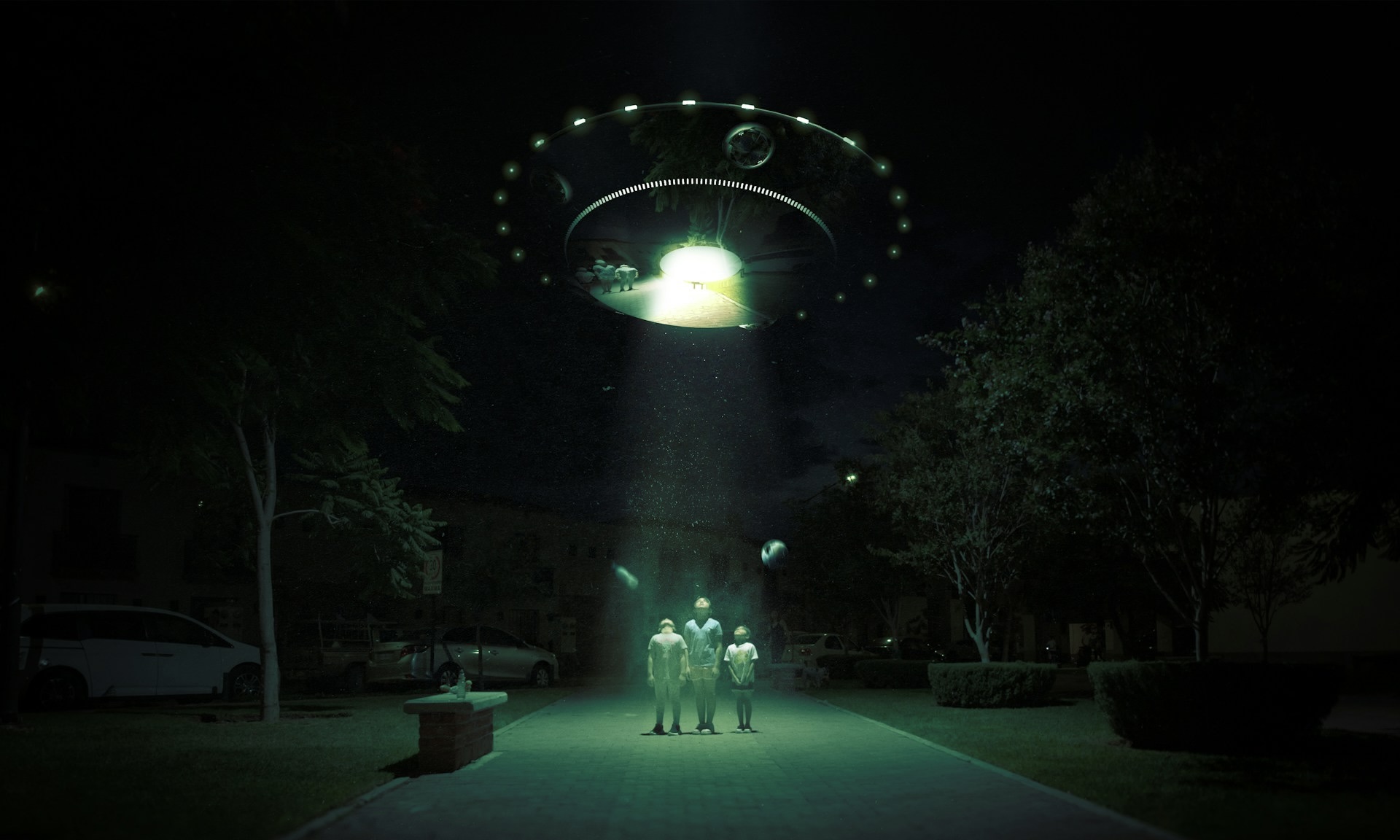Science
Scientists Propose Aliens Might Use AI as Disguise Amid Technology Advances

Recent discussions among scientists have raised intriguing possibilities regarding extraterrestrial life and its relationship with advancing technology. Researchers are now considering the theory that artificial intelligence (AI) may serve as a disguise for beings from other worlds. This concept emerges as part of a broader investigation into the existence of extraterrestrial civilizations within our galaxy.
Dr. Robin Corbet from NASA’s Goddard Space Flight Center suggests that the Milky Way likely hosts numerous extraterrestrial cultures, known as ETCs. Despite widespread beliefs that these civilizations could possess advanced technology, Dr. Corbet argues that they may lack the capability for large-scale astroengineering. He elaborates that while ETCs might send high-power beacons or probes to reach out to other civilizations, the effort required could span billions of years, reducing the incentive for such communication.
Dr. Corbet explains that Earth may not hold significant interest for these civilizations, as he states, “This consideration also leads to the expectation that no ETC will colonise a large fraction of the Galaxy.” He emphasizes the concept of “radical mundanity,” which suggests that the probability of an alien invasion is minimal. In his paper titled “A Less Terrifying Universe? Mundanity as an Explanation for the Fermi Paradox,” he outlines these theories, contributing to ongoing efforts to resolve the Fermi Paradox—the apparent contradiction between the high probability of extraterrestrial life and the lack of contact with such civilizations.
The Fermi Paradox has spurred various theories over the years. Some propose that humanity resides within a “celestial zoo,” while others speculate on the possibility of aliens shapeshifting into forms that are unrecognizable to us. The Drake Equation, a probabilistic formula for estimating the number of active, communicative extraterrestrial civilizations in the Milky Way, implies that many such civilizations should exist and be capable of contacting humanity.
In a separate context, reports earlier this month discussed an object designated as 3I/ATLAS, which is anticipated to make its closest approach to the Sun on October 29, 2025. Speculation arose that this object could be an “alien mothership” or a spacecraft. However, these claims have been debunked. Astronomers classify 3I/ATLAS as a hyperbolic interstellar object, indicating it originates from outside our solar system and is merely passing through.
3I/ATLAS was first detected by the ATLAS survey and is the third confirmed interstellar object, following ‘Oumuamua in 2017 and ‘Borisov’ in 2019. Described as a small icy or rocky body, it resembles a comet but shows no signs of propulsion or artificial structures. According to NASA’s Center for Near-Earth Object Studies, 3I/ATLAS poses no threat of collision with Earth or any other planetary body. The mention of October 29 relates solely to its proximity to the Sun, not an impact on Earth, and it will not be visible to the naked eye without advanced telescopic equipment.
As discussions around AI and extraterrestrial life continue, the intersection of technology and the search for alien civilizations remains a captivating area of study. Scientists like Dr. Corbet are pushing the boundaries of understanding, even as they address the complexities of communication—or the lack thereof—between civilizations that may inhabit the vast reaches of the universe.
-

 Entertainment3 months ago
Entertainment3 months agoAnn Ming Reflects on ITV’s ‘I Fought the Law’ Drama
-

 Entertainment4 months ago
Entertainment4 months agoKate Garraway Sells £2 Million Home Amid Financial Struggles
-

 Health3 months ago
Health3 months agoKatie Price Faces New Health Concerns After Cancer Symptoms Resurface
-

 Entertainment3 months ago
Entertainment3 months agoCoronation Street’s Carl Webster Faces Trouble with New Affairs
-

 Entertainment3 months ago
Entertainment3 months agoWhere is Tinder Swindler Simon Leviev? Latest Updates Revealed
-

 Entertainment4 months ago
Entertainment4 months agoMarkiplier Addresses AI Controversy During Livestream Response
-

 Science1 month ago
Science1 month agoBrian Cox Addresses Claims of Alien Probe in 3I/ATLAS Discovery
-

 World2 weeks ago
World2 weeks agoBailey Announces Heartbreaking Split from Rebecca After Reunion
-

 Health4 months ago
Health4 months agoCarol Vorderman Reflects on Health Scare and Family Support
-

 Entertainment4 months ago
Entertainment4 months agoKim Cattrall Posts Cryptic Message After HBO’s Sequel Cancellation
-

 Entertainment3 months ago
Entertainment3 months agoOlivia Attwood Opens Up About Fallout with Former Best Friend
-

 Entertainment2 weeks ago
Entertainment2 weeks agoCoronation Street Fans React as Todd Faces Heartbreaking Choice





















